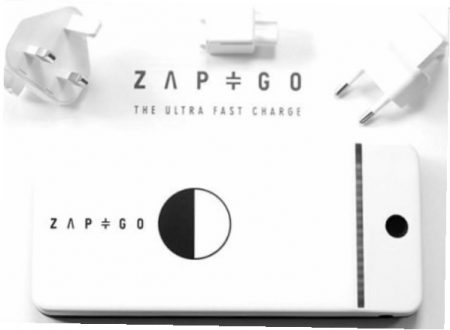October 22, 2017 – Battery storage is one of the hottest fields in technology today. Lithium-ion or Li-ion represent the current industry standard found in smartphones, laptops, tablets and electric vehicles (EVs). But Li-ion has a number of drawbacks. The batteries can overheat and they are not quick charging. You need a lot of cells to run an EV and recharge speeds take far longer than refueling a gas or diesel tank. So university labs all over the planet are working with new materials and experimenting with form factors to overcome Li-ion deficiencies.
One company, Zap&Go, based in Oxford, The United Kingdom, and a spinoff from Oxford University, is experimenting with carbon-ion (C-ion) cells which addresses Li-ion deficiencies: overheating and recharge speeds. The C-ion cell is non-inflammable and it recharges at a much faster rate of speed. Each C-ion cell is electrochemically simpler than Li-ion and can handle thousands of charge-discharge cycles without degrading. The patented technology contains cells with positive and negative electrodes constructed from double-sided, carbon-coated aluminum. Membranes soaked with ionic electrolyte separate the electrodes.
The company’s first product is a device called the Zap&Go 5-Minute Charger (seen in the image below). It has an onboard C-ion cell, 2 USB ports and a Qi wireless charging disc. Each charger has the capacity to handle three mobile devices at a time. Recharge speed varies depending on the Li-ion battery in the device. For example, the device can recharge an empty iPhone 5 battery to 100% in 5 minutes, or an iPhone 6 battery to 75% in the same amount of time.
When in use the charger display illuninates during each recharge cycle and buzzes when devices are fully powered. When discharged plugging in the Zap&Go to any power outlet only takes 5 minutes before the C-ion cell is 100% recharged. Added benefits include: C-ion cells never decay, are 100% recyclable and good for 100,000 charge-discharge cycles.
Zap&Go wants to see recharge stations for EVs using its C-ion cells. Even though the current crop of EVs use Li-ion technology, a recharge station with C-ion technology will fully charge the EV in the same amount of time it takes to fuel conventional diesel and gasoline-powered cars and trucks. So even with the limited range of current EV models at around 100 to 150 kilometers, deployment of C-ion charge station infrastructure could prove a real game changer.
So why isn’t it Zap&Go already being put in place in a recharge station netowrk? Because like so many alternatives to the technology at hand, Li-ion, C-ion still has to prove itself to people like Elon Musk, and other EV makers.
Zap&Go is attracting investor attention, recently having secured $13 million U.S. in funding from private investors, EU Horizon 2020, and a crowdfunding campaign. I can imagine Elon Musk making the call to them if not now then in the near future.









